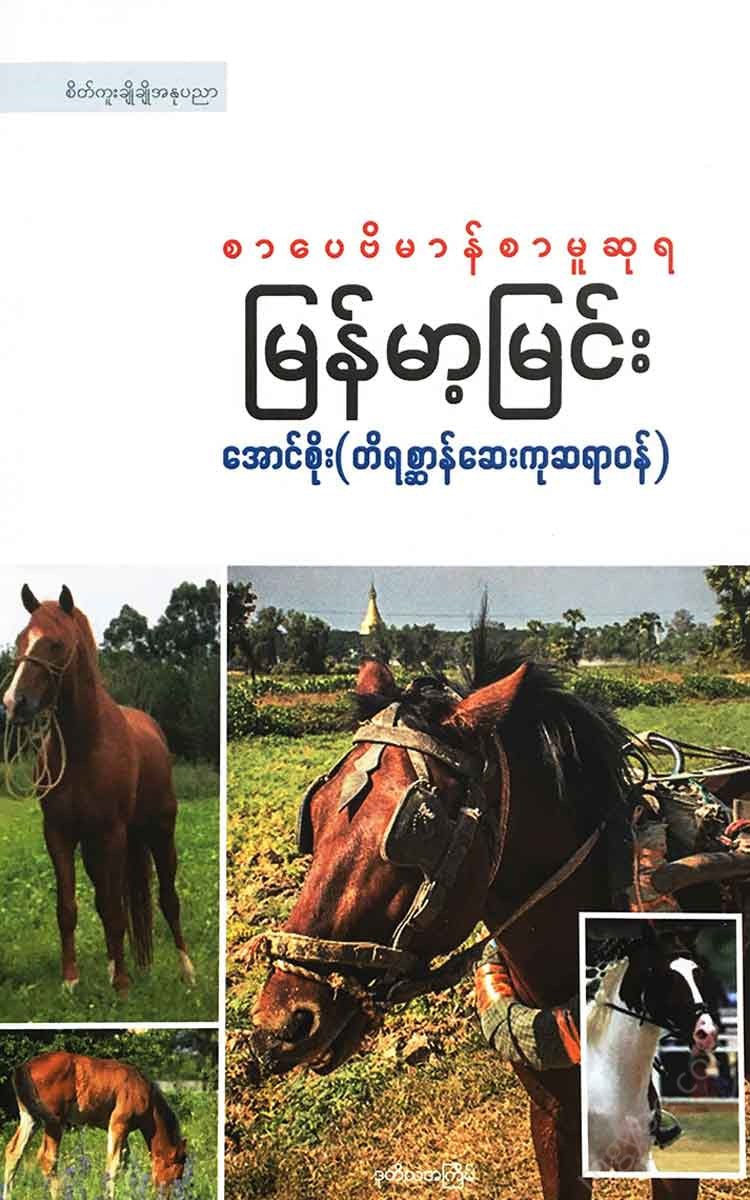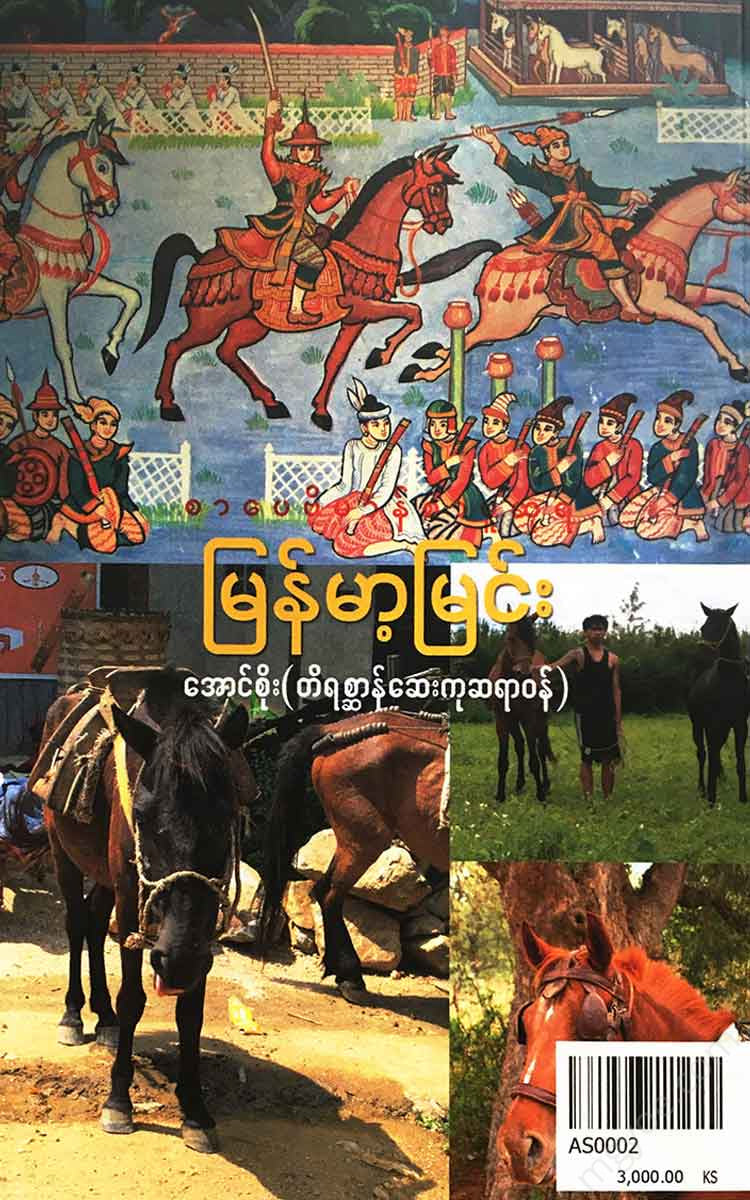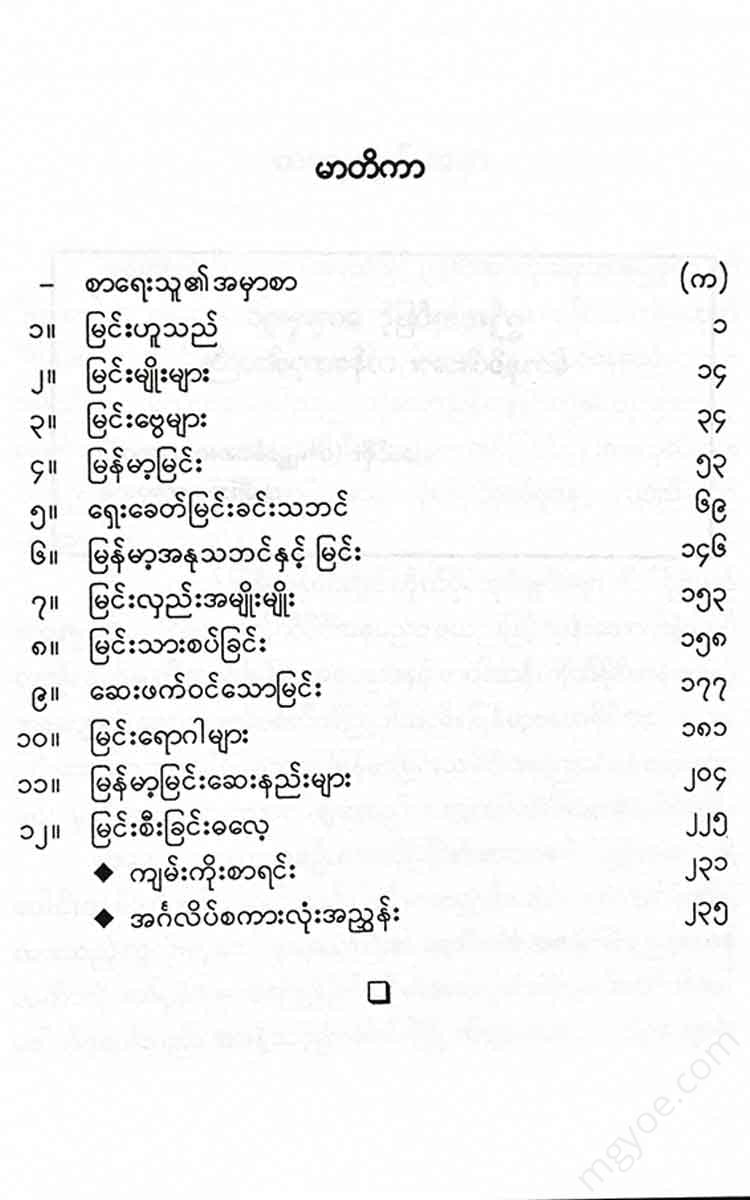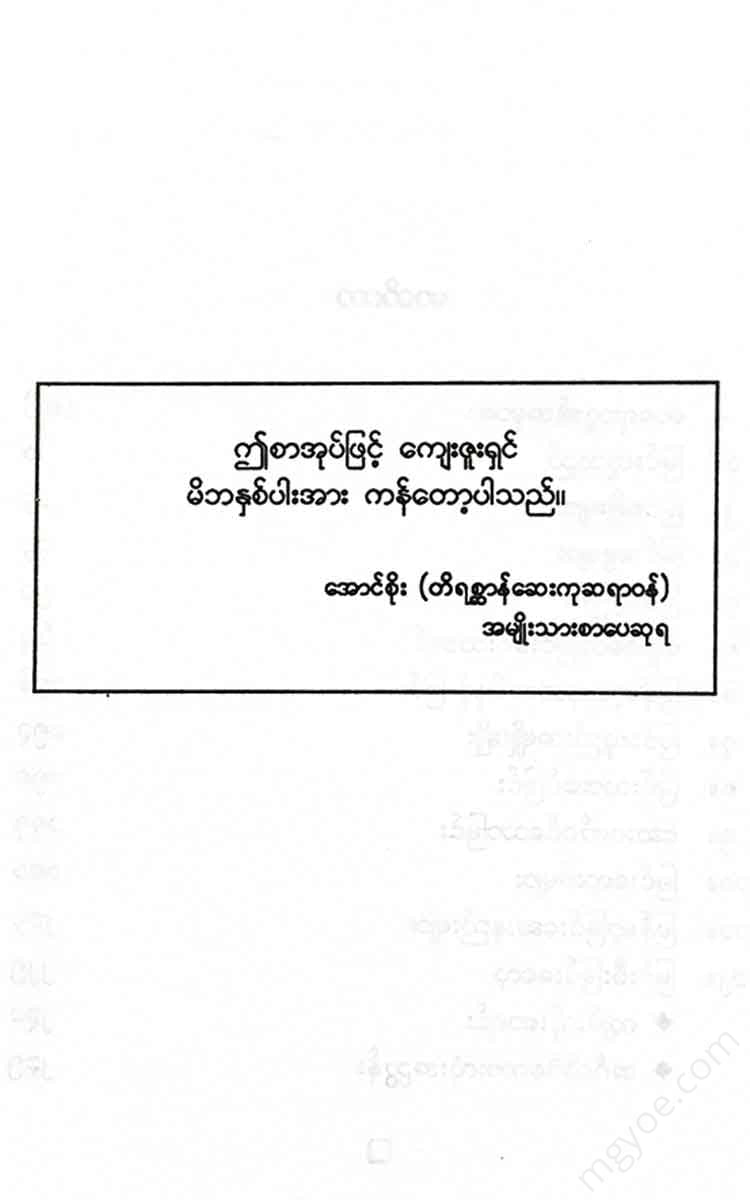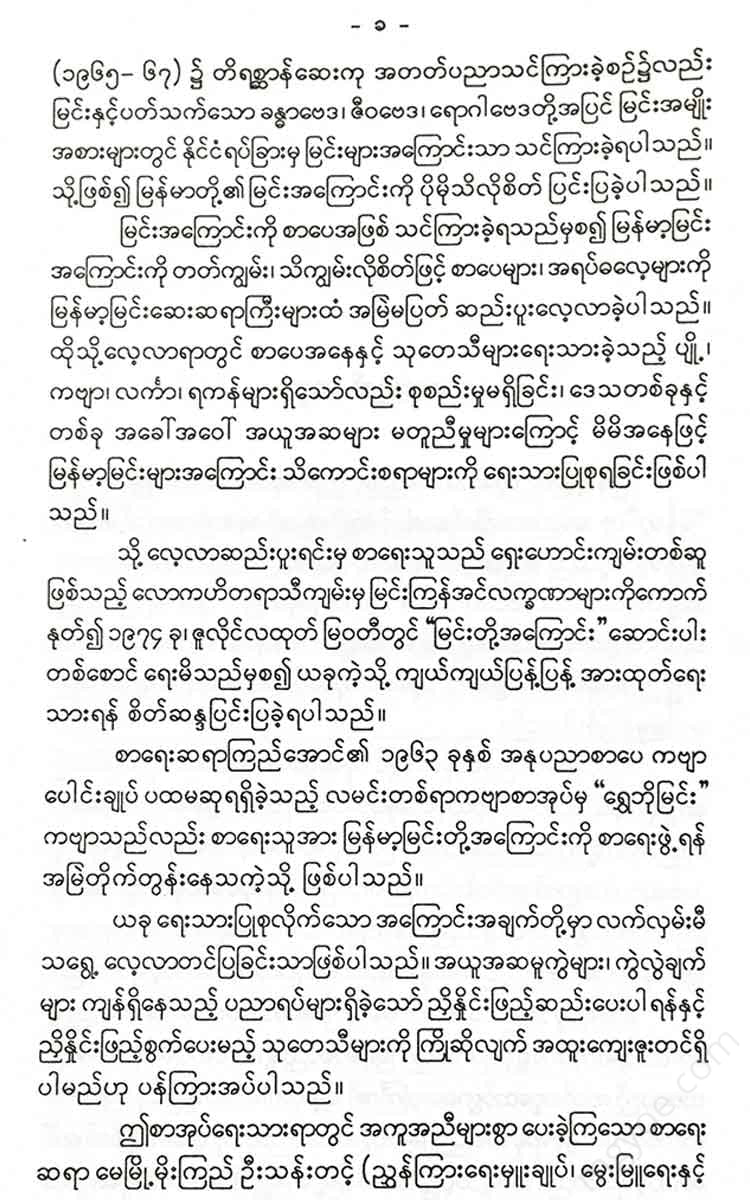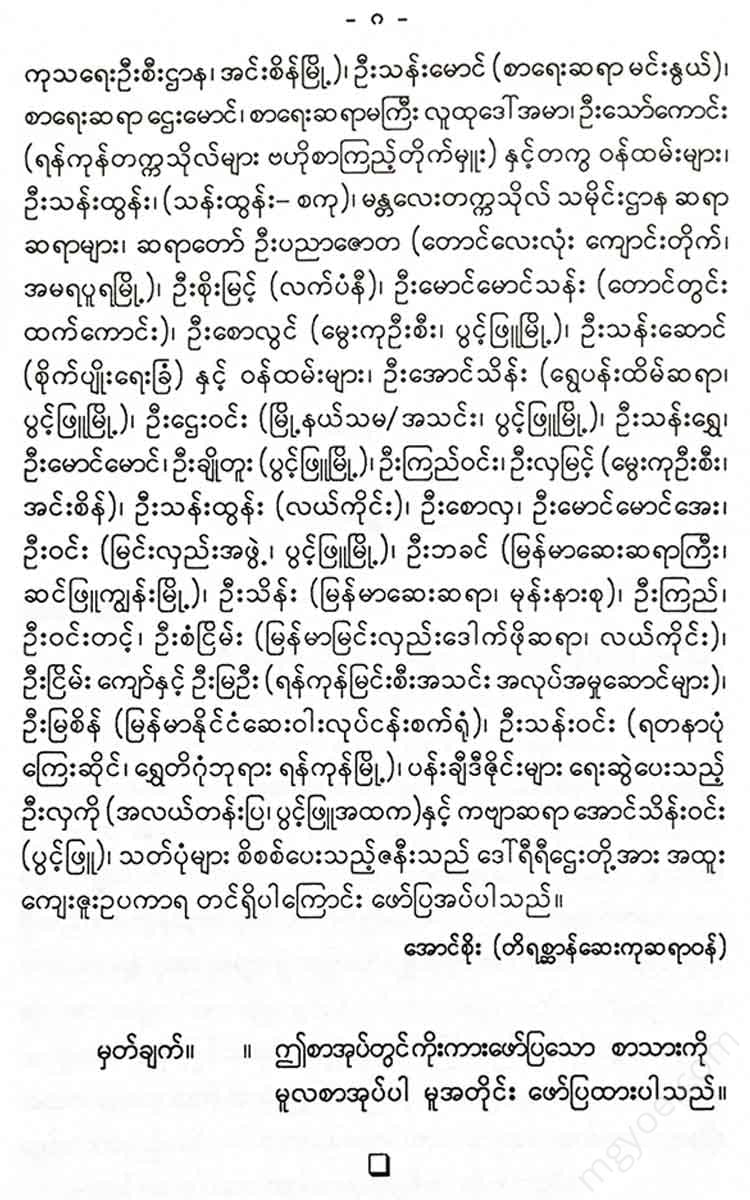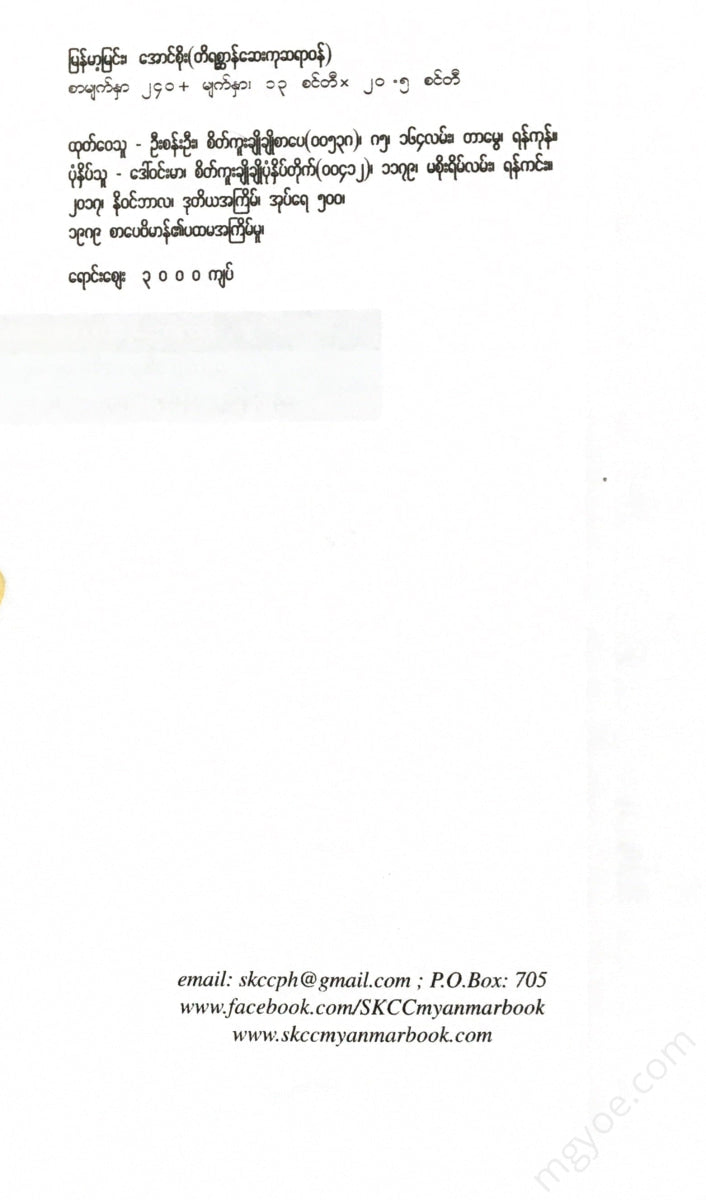စိတ်ကူးချိုချိုစာပေ
Aung Soe (Veterinarian) - Myanmar Horse
Aung Soe (Veterinarian) - Myanmar Horse
Couldn't load pickup availability
Chapter (1)
What is a horse?
Where is the horse from?
Before mentioning the Burmese horse, I would like to explore and present the history of horses that have appeared in the world.
Horses appeared on the earth millions of years ago. They appeared about 600 million years ago. The first horse was called Eohippus, which was about the size of a cat or dog. It had four hooves on its front feet and three on its back feet. It was a very strange animal with sharp teeth. It had many enemies and was afraid of being hunted and killed by other animals. When it ran, it jumped to move quickly. When it jumped, it used its middle toes to the detriment of its side toes. Then, the side toes disappeared and only the horse's hoof remained.
The history of the horse is much more complicated than that of man. Over the course of millions of years, Eohippus gradually grew larger. Its neck became longer and its feet lost their toes, leaving only one hoove. It is said that the horse spread from the Americas to Asia during the Ice Age. Some say that the horse originated in Asia.
At the time when the horse was called 'Mesohippus', the horse looked like a very small horse. It was beautiful. After 10 million years of Mesohippus's life, the shape of the horse also evolved. It came to be the beginning of the horse genus, Equus. Then the horse was called 'Equus caballus'. Equus is the genus and caballus is the species.
Once the Equus matured and reached the age of one million, they roamed the world, grazing.
It is said that there were horsemen in Egypt more than two thousand years before Christ, but when examined with historical evidence and scientific research, they seem like fairy tales. Like the story of the unicorn, a horse with a single horn that could fly into the sky.
Therefore, the Egyptians were the first people to domesticate horses and the first to find evidence of horse domestication.
Historical evidence has been found that horses were first used in Babylon around 2,000 BC and in Egypt around 1,700 BC.
In the Stone Age, horses were not used for harnessing, but rather as prey animals for meat. In the Bronze Age, it is estimated that horses were used for harnessing, based on the discovery of bridle rings and bronze rings from excavated horse remains.
By 1000 BC, there is evidence that the Egyptians and Arabians were using horses in warfare. Archaeological evidence of Greek war horses can be found in the British Museum.
In the fourth century BC, Plato introduced a new philosophy: "Children should spend their early hours practicing horsemanship. When they grow up, they should lead their wars on horseback. "
Alexander the Great, the Greek king, received a dark, shiny horse from his father. Despite its wild appearance, Alexander the Great named it "Bucephalus" and, when he conquered India, named a city after the horse in its honor.
Caesar, who came a few centuries after Alexander, and the Norman hero King Arthur were both mounted warriors.
The horse's iron hooves first appeared in Europe in the 10th century AD.
In Europe, from 1700 to 1800 BC, all horses that grazed from east to south of Prussia are said to have descended from the Tarpeian breed.
The horse's body proportions are beautiful, and its movements are elegant. There are sayings that God created a creature called a horse by combining the beauty and loveliness of women with the strength and power of men.
Therefore, it is undeniable that the kings and rulers of the country in the era of carts and boats loved beautiful horses. It is undeniable that horses, which have evolved step by step from Otipas to Equios, now stand as a beautiful animal.
What is a horse?
The meaning of the name of the horse is explained in Burmese scriptures as follows.
Another name for a horse is sukhāvahi - one who serves the Lord happily. vinītāv - a horse that serves the Lord happily and does not abandon the Lord even when hit by a weapon. yevatāv - a vicious horse, khatika - a fierce horse. Javana is also called a swift horse.
In the beginning of the world, after the creation of humans, a white lotus flower and a red lotus flower appeared in the lake of birth. The red lotus flower became a male red horse, and the white lotus flower became a female white horse. There was a conception, and from the red lotus flower, the red horse reached the temple of the sun and was called Suriya Astha. From the white lotus flower, the white horse reached the temple of the moon and was called Sandara Astha.
The mating of the Auriya Assa and the Sandarassa horses produces the Sindho, Velaha, Kyakha, Kyakha, Kyakha, Kyakha, Shwesintu, etc., which are born between the clouds of the sky, at the foot of the Myinmo mountain, at the Navaratna lake, etc.
It is said that the six kinds of human beings, the two kinds of animals, the ten kinds of animals, the four kinds of birds, the four kinds of dragonflies, the four kinds of donkeys, all arose one by one.
The following is stated in the Ashvade Myin Kyin, the book of the Secretary of the Yao, U Bo Hlaing.
There are many names for horses depending on the region where they were born. A horse born in Myanmar is called a Burmese horse, a horse born in the country of Sindh, also known as Dhamma, is called a Sindh horse, a horse born in the country of Vanayu, Afghanistan is called a Vanayu horse, a horse born in Persia is called a Parasika horse, a horse born in Cambodia is called a Cambodian horse, and a horse born in Arabia is called an Arab horse.
The Sindho horse is a very fast horse of ancient origin. It is red, the color of tamarind seeds, and has four legs that are dark black. The Sindho horse runs very fast and is often called a kind of sky-flying horse. It is said that it is impossible to see a running horse clearly. It is said that only by tying a red cloth to the horse's feet and making it run, can it be seen as a circle of fire that is spinning. When it reaches a lake and runs, the water does not wet its hooves. It is said that if it is made to run by stepping on the lotus petals in the lake, the lotus petals do not tear, break, or become damaged. It is said that the Sindho horse is so fast, so good-looking, and so worthy of its owner, that the ancient kings bought it for half of the country. The Valahaka horse that the Sakyavatay king rode is said to be of the Sindho horse breed.
The names of the horses mentioned above are based on the region where the horses were born. The names of the horses based on the breed of the horses are listed as five types: the natural horse, the donkey, the Ashtoreth horse, the Setha Thoreth horse, and the Walahaka horse. Further, in the book of King Yo,
The donkey is the worst of the five horse breeds. Therefore, in the Dukanipatvaledaka Jataka, the Bodhisattva minister complains to the king that the Sindhu horses, who drank the juice of the grape (Mudrat), did not get drunk. If the donkeys were to drink the remaining juice, they would get drunk.
If a donkey is bred with a natural mare, it will be born as an Ashtora. It is called a Law. It has two strengths and qualities that a horse has (patience and speed) and three strengths that a donkey has (carries a load even when exhausted and tired. It does not mind cold or heat. It is content with whatever it gets, whether it is grass, water, or food). These strengths are combined to produce a unique and excellent animal.
It is also shown that if a marten mare and a donkey are crossed, they are called a Setha Torah horse.
Based on their strength, they are classified as: Vallabha = a noble horse, Hayottama = a noble horse, Javana = a running horse, Jawamika = a running horse, Pajavi = a running horse, Assamedhiya = a horse used for sacrifice, and Rissa = a chariot horse.
King Yo compiled the Asabeda Myin Kyin in 1233, on the 2nd day of the full moon of the month of Wakhaung (2-8-1871). It is stated that it refers to the Sutta, Nipat, Atthakatha, Samyot, Kika, and the Sanskrit book, the Abhidhan book, etc., as well as the books of the Khut Saung. Regarding the points in the Myin Kyan Linka compiled by the Hermit of Kutho Kutho village (named U No) during the reign of the Buddha, there is no doubt that it is a modern Myin Kyan Linka, without following the contents and orders of the Myin Myo.
It is worth noting that the book Ashtadeepani Myin Kyin, published by the Ratana Siddhisa Printing House, Singtan, Mandalay in 1910, by U Saw, a legal scholar from Myinchan, refers to Shwe Toe Gaman Sachi U No's Myin Kyan Linka and also to the Adhi Kappa Kyin La.
The author is merely quoting from the available sources. He is not presenting new ideas. He is not criticizing and comparing the sayings of ancient writers. He is presenting variations.
Five types of flying horses
The horse-like character was born from the mother Asamudi and the father Asavati, with a horse-like head and a human body. Asamudi was a hermit. That Asamukhi hermit lived in the sky at night, eating the clouds, and during the day he lived in the Navaratna lake, surrounded by bees and lotuses. That hermit gave the horse-like qualities of every worldly object to King Mahasamata in his mouth, as stated in the Asamukhi scripture. .
According to the Adi Kappa, the five types of flying horses are (1) the Sindho horse, (2) the Velaha horse, (3) the sky-splitting horse, (4) the cloud-splitting horse, and (5) the pure gold horse.
(1) Sindh horse breed .. North face of Anau Atta Lake
